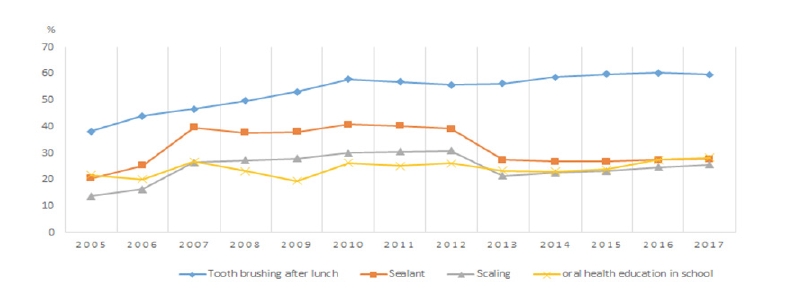Abstract
Objectives: The aim of this study was to investigate trends of oral health behaviors in Korean adolescents. Methods: From the 2005 to 2017 Korea Youth Risk Behavior web-based Survey (KYRBS) Secondary Data (study to 748,461). Independent variables were the year, gender, grade, and living area. Dependent variables were the rate of tooth-brushing after lunch, scaling, use of sealant, and oral health education within 1 year. Chi-squire tests were used to estimate the rate of oral health behaviors and trends. In addition, multiple logistic regression analysis was used to estimate the association between socio-economic characteristics and oral health behaviors. The analyses were conducted using IBM SPSS statistics 21 (version 21.0, IBM Corporation, New York, NY, USA). Results: The rate of tooth-brushing after lunch and use of sealant have significantly increased every year. Oral health behaviors were significantly associated with socio-economic characteristics. The rate of oral health education was higher among males than females, which was in contrast to other oral health behaviors. The scores for tooth-brushing after lunch, use of sealant, and scaling in females were 2.33 (95% CI; 2.27-2.40), 1.31 (95% CI; 1.29-1.33), and 1.20 (95% CI; 1.18-1.22), which were higher than those in males. The score for use of sealant in the highest household economy group was 1.13 (95% CI; 1.10-1.17), which was higher than the lowest economy group. Conclusions: We found positive trends of oral health behaviors in Korean adolescents.
Figures & Tables

Fig. 1. Trend of oral health behaviors during 2005-2017
